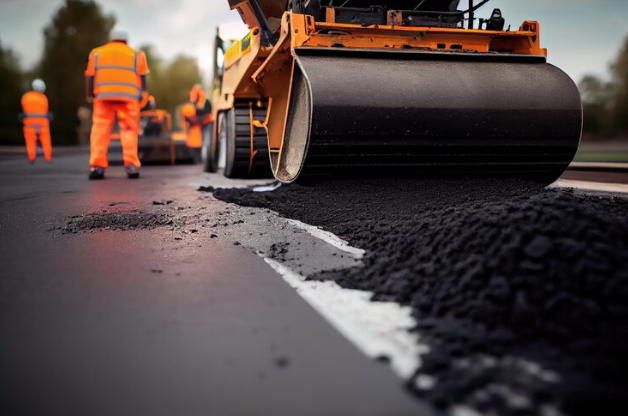Mastering the Art of Asphalt Paving: A Comprehensive Guide by Asphalt Journal
by siteadmin

Asphalt paving is an integral aspect of modern infrastructure development, serving as the backbone for roadways, parking lots, and various other surfaces. The meticulous process of laying asphalt involves a combination of science, technology, and craftsmanship. In this comprehensive guide by Asphalt Journal, we will delve into the intricacies of asphalt paving, exploring its various stages, best practices, and the key factors that contribute to a successful and durable pavement.
The Foundation of Asphalt Paving
Before the first layer of asphalt is laid, the foundation is of utmost importance. The subgrade, which is the natural soil or aggregate beneath the pavement, must be properly prepared. This involves compaction and grading to ensure stability and uniform support. The quality of the foundation sets the stage for the durability and longevity of the entire asphalt pavement.
Materials Matter – Asphalt Mixtures and Aggregates
The success of any asphalt paving project hinges on the selection of the right materials. Asphalt mixtures, commonly known as hot mix asphalt (HMA), consist of a blend of aggregates, binder, and filler. The choice of aggregates, which include materials like crushed stone and sand, directly influences the strength and performance of the asphalt. A well-designed mix is crucial for achieving the desired characteristics and durability.
The Art and Science of Asphalt Compaction
Proper compaction is a critical step in ensuring the structural integrity of an asphalt pavement. Compactors are used to compress the asphalt mix, eliminating voids and achieving the required density. The compaction process requires precision and attention to detail to prevent future issues such as rutting, cracking, and uneven surfaces. Understanding the nuances of compaction is key to a smooth and resilient asphalt pavement.
Paving Equipment and Techniques
The machinery and techniques employed during the paving process play a pivotal role in achieving a flawless asphalt surface. Asphalt pavers, rollers, and other specialized equipment are utilized to lay and compact the asphalt mix efficiently. Advancements in paving technology, such as automatic grade and slope controls, contribute to the precision and accuracy required for a high-quality finished product.
Maintenance and Preservation Strategies
The work doesn’t end once the asphalt pavement is laid; regular maintenance and preservation are essential for prolonging its lifespan. This includes routine inspections, crack sealing, and timely repairs to address any issues that may arise. Proper maintenance not only extends the life of the pavement but also enhances safety and reduces long-term costs.
Asphalt paving is a sophisticated process that demands a combination of technical expertise, quality materials, and meticulous execution. Whether it’s a new road, parking lot, or resurfacing project, mastering the art of asphalt paving is essential for creating durable, safe, and aesthetically pleasing surfaces. This comprehensive guide by Asphalt Journal aims to provide insights into the foundational elements, material considerations, compaction techniques, equipment utilization, and maintenance strategies that collectively contribute to successful asphalt paving projects. As we navigate the challenges of modern infrastructure development, understanding and implementing these best practices will pave the way for a resilient and sustainable built environment.
Asphalt paving is an integral aspect of modern infrastructure development, serving as the backbone for roadways, parking lots, and various other surfaces. The meticulous process of laying asphalt involves a combination of science, technology, and craftsmanship. In this comprehensive guide by Asphalt Journal, we will delve into the intricacies of asphalt paving, exploring its various…
Recent Posts
- The Benefits of Driveway Sealing Rochester NY
- Summit Paving & Masonry’s Exceptional Driveway Pavers
- Renew, Restore, Resurface: Mastering Driveway Repair with Asphalt Journal
- The Art and Science of Driveway Paving: Unveiling Excellence with Asphalt Journal
- Revitalizing Roads: A Deep Dive into Asphalt Repair Techniques by Asphalt Journal
